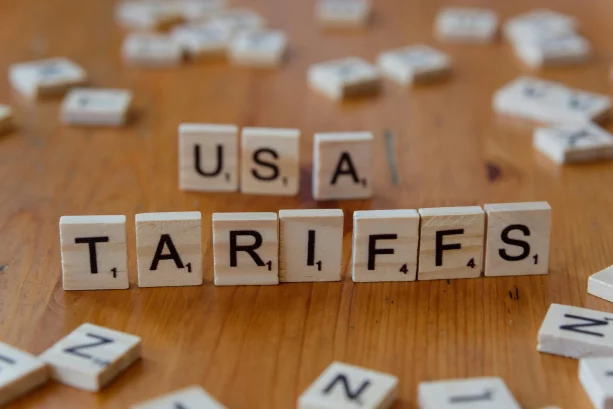Trade disputes in recent years? Absolutely, they’ve significantly disrupted operations across a wide spectrum of industries, and the healthcare sector hasn’t escaped unscathed. Dental practices, in particular, are facing mounting challenges. Due to the imposition of tariffs, costs for everything from basic dental instruments to critical materials have escalated sharply. Where a dental crown was once a relatively predictable expense, it’s now approaching the level of a substantial monthly payment, almost reminiscent of financing a vehicle. The underlying causes of these price increases are multifaceted, primarily linked to shifts in global trade policy. More importantly, the repercussions extend beyond just supply costs: patients are feeling the pinch, and dental practices are under increased financial pressure. It is, therefore, essential to dissect the origins of these cost hikes and assess their broader impact on both patient expenses and the financial health of dental providers.
Understanding Tariffs and Their Impact on Dental Products
Tariffs. The term alone might trigger thoughts of arcane economic policy or tedious government proceedings, but their influence extends far beyond the halls of legislature. In reality, tariffs subtly but significantly affect everyday experiences, such as a routine dental appointment. The increased costs associated with tariffs are embedded in the price of essential equipment and supplies: the dental chair, specialized instruments, even the materials for fillings.
But why do tariffs exist, and how do they translate into higher costs for consumers? Understanding the rationale behind tariffs and their downstream effects requires examining both their economic purpose and their practical impact. Ultimately, this analysis provides clarity on why what was once a straightforward checkup now carries a heftier price tag. Unpacking these complexities can reveal much about the intersection of economic policy and personal expense.
What Are Tariffs?
Tariffs, in essence, function as taxes imposed by governments on imported goods. The rationale behind this policy is typically to shield domestic industries from competition posed by lower-priced foreign products, or occasionally as a retaliatory measure against countries engaging in unfair trade practices. While the theoretical justification is to bolster local businesses, the practical outcome often involves increased consumer prices on imported items, such as specialty foods or branded apparel. This impact extends beyond individual consumers, as businesses relying on imported goods may also face higher costs. Ultimately, relying on tariffs as an economic strategy yields mixed results, with both potential benefits and notable drawbacks.
How Tariffs Affect Dental Products
Dentists face significant challenges due to reliance on imported equipment and supplies, such as dental chairs, radiography devices, and disposable gloves. When governments impose tariffs on these imports, the increased costs are typically transferred to patients. For instance, a 25% tariff on imported dental chairs would substantially raise operational expenses for dental clinics. Inevitably, these additional costs are reflected in the fees charged to patients for dental services. Therefore, trade policies and tariffs are not merely abstract economic concepts; they have direct and tangible impacts on the affordability of dental care for consumers.
The Ripple Effect on Dental Practices and Patients
When tariffs are implemented, the effects are not limited to political discourse or border control. These economic shifts directly impact dental practices: essential supplies become more costly or harder to obtain. As a result, patients often experience increased fees for standard procedures such as cleanings, fillings, and routine examinations. This escalation in operational expenses disrupts established workflows within dental offices and places additional financial strain on both practitioners and patients. The broader implications are clear, tariffs can significantly reshape the landscape of dental care delivery.
Increased Operational Costs for Dental Clinics
Most dental clinics operate within fairly limited financial margins. When the price of essential supplies such as gloves or suction devices increases unexpectedly, it can significantly disrupt their budgets. In response, clinics may have to consider less-than-ideal options: increasing patient fees, reducing staff (which can, unsurprisingly, lead to longer wait times), or postponing investments in advanced equipment like updated X-ray machines. Ultimately, these financial pressures can make it increasingly difficult for individuals to access quality dental care at an affordable cost.
Higher Out-of-Pocket Expenses for Patients
When clinics increase their prices in response to broader economic pressures, the financial burden inevitably shifts to patients. A routine dental cleaning, which should be a standard aspect of preventive care, begins to resemble an exclusive, high-end service. Unsurprisingly, this leads many individuals to forgo appointments altogether. The unfortunate irony is that neglecting regular dental check-ups often results in far more severe oral health issues over time. In essence, by attempting to avoid minor costs, patients expose themselves to significantly greater challenges in the future.
Strategies for Mitigating the Impact of Tariffs
Dentists aren’t able to simply eliminate tariffs on their own, if only it were that easy. Still, they’re not entirely without options. Many actively look for more affordable suppliers, form partnerships with colleagues to share resources, or even advocate for policy changes when needed.
The main goal here is to keep costs down and maintain a high standard of care, all without pushing extra expenses onto patients. It’s definitely a complex challenge, but these efforts really highlight a commitment to both quality and affordability within dental practice.
Diversifying Supply Chains
Contrary to the notion that dental suppliers are mere bystanders affected by tariff changes, they actively shape their sourcing strategies. When tariffs drive up costs, suppliers can turn to alternative markets that are less impacted, effectively mitigating financial strain. This strategy also reduces the risk of shortages for key dental products.
In essence, relying exclusively on a single source for procurement heightens a firm’s vulnerability to disruptions. Diversification, by contrast, bolsters resilience within the supply chain, ensuring more consistent availability and stability even when external factors become unpredictable.
Advocating for Policy Changes
Frankly, it’s surprising that dental professionals and major industry stakeholders haven’t advocated more aggressively for the removal of tariffs on essential dental supplies. The costs associated with basic dental procedures like a simple filling have become increasingly burdensome. Eliminating these tariffs could significantly reduce expenses for both providers and patients. If policymakers were made fully aware of the direct impact these additional costs have on public health and household finances, there might be meaningful policy change. Accessing necessary dental care shouldn’t be comparable to purchasing a luxury item.
Conclusion
Tariffs have significantly disrupted the dental industry, leading to a noticeable increase in costs, not only for dental practices but also for patients seeking routine care. The underlying issue stems from additional fees imposed on essential supplies such as drills, masks, and latex gloves. These incremental expenses accumulate rapidly, placing considerable financial pressure on both providers and patients.
Understanding the mechanisms behind these price increases is not merely an academic exercise; it is essential for the operational viability of dental practices and the financial well-being of patients. In response, the industry may need to explore alternative strategies, such as diversifying suppliers or engaging in targeted advocacy efforts, to mitigate the impact of these tariffs.
Ultimately, the objective should be to maintain accessible dental care without imposing prohibitive costs on patients. Ensuring that individuals are not forced to choose between essential dental treatment and other basic expenses remains a central concern for the field.
Ready to learn how these tariff changes affect your dental care, and what you can do about it? Don’t let rising costs catch you off guard. Stay informed and take control of your oral health expenses by reading our full guide. Have questions or need personalized advice? Contact GP Dental today, we’re here to help you navigate these changes and keep your smile healthy without breaking the bank.
Frequently Asked Questions (FAQs)
1. Why have dental product prices increased recently?
Dental product prices have increased in recent years, largely due to tariffs placed on imported equipment and supplies. These tariffs have affected everything from dental instruments to materials like crowns, braces, and even sterilization tools. As a result, dental clinics are facing higher operational costs, which can sometimes lead to increased fees for patients. While many practices try to absorb these costs to avoid passing them on, the financial pressure is becoming more difficult to manage across the industry.
2. How do tariffs on chiropractic equipment relate to dental product costs?
Tariffs on chiropractic equipment mirror those imposed on dental products, reflecting broader trade policies that impact medical imports across multiple healthcare sectors. Just like dental clinics, chiropractic offices face rising costs for essential tools and supplies because of these tariffs. This leads to increased operational expenses that can affect the pricing of services for patients. Both industries are navigating similar challenges as they work to balance quality care with growing financial pressures. Understanding these shared hurdles helps shed light on why healthcare costs sometimes rise unexpectedly.
3. What can patients do to manage higher dental care costs?
Patients who are concerned about dental costs have several options to help manage expenses. Many dental providers offer payment plans that break down the total cost into more manageable monthly amounts. Additionally, some clinics provide sliding scale fees based on income, making care more affordable for those with limited budgets. Exploring dental insurance plans can also help offset the costs of treatments and routine visits. It’s always a good idea to discuss these options directly with your dental provider to find the best solution for your situation.
4. Are there efforts to reduce tariffs on dental products?
Yes, dental associations and industry groups are actively advocating for tariff exemptions on essential dental products. They argue that these exemptions would help reduce the financial burden on dental clinics and make care more affordable for patients. By easing cost pressures, clinics can better maintain high standards of treatment without passing excessive fees onto consumers. These groups are working closely with policymakers to highlight the importance of accessible dental care and the impact tariffs have on the industry. Their efforts aim to create a more sustainable environment for both providers and patients alike.
5. Could domestic manufacturing help reduce dental product costs?
Increasing domestic production of dental equipment and supplies presents a promising solution to reduce reliance on imported goods. By manufacturing more products locally, the dental industry could avoid many of the tariffs that currently drive up costs. This shift would help stabilize prices and make essential dental materials more accessible to clinics and patients alike. Over time, boosting domestic production could lead to lower overall expenses and greater supply chain resilience. Encouraging investment in local manufacturing also supports jobs and innovation within the healthcare sector.


